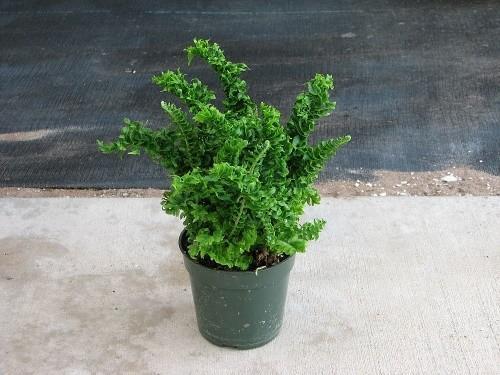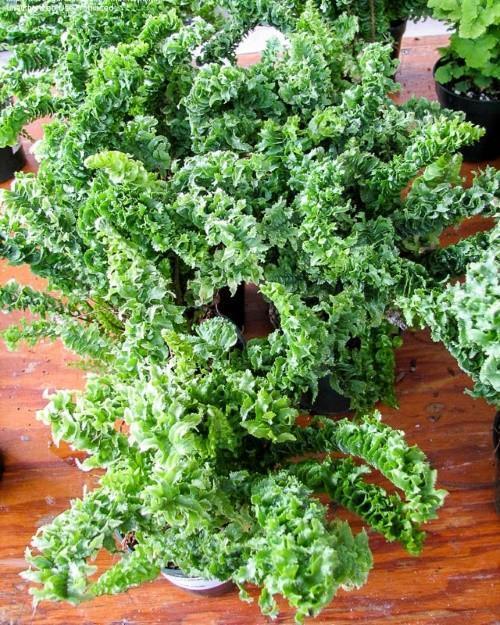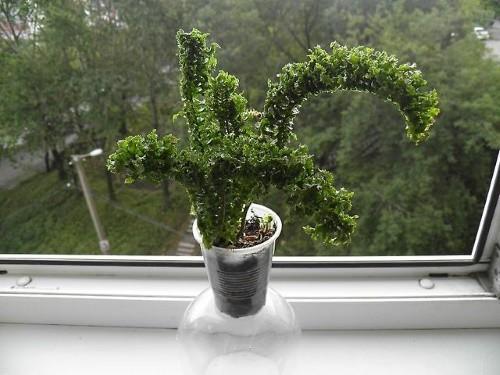Curly and compact Emin's nephrolepis on your windowsill
 The homeland of ferns (they are also nephrolepis) are tropical shady forests with high humidity, but this did not prevent some of them from conquering new spaces, including on our windowsills. As a room culture, about 5 varieties of ferns are grown, and nephrolepis Emina is just one of the most compact and beautiful species.
The homeland of ferns (they are also nephrolepis) are tropical shady forests with high humidity, but this did not prevent some of them from conquering new spaces, including on our windowsills. As a room culture, about 5 varieties of ferns are grown, and nephrolepis Emina is just one of the most compact and beautiful species.
Among flower growers, this fern is known as the "dragon's tail" or "green dragon" for unusually curly leaves.
What does the plant look like?
Fans of small plants with decorative leaves will appreciate Emina: a low, up to 50 cm in height, nephrolepis with erect leaves-fronds will not take up much space, but it will stand out favorably against the background of other flowers with its beautiful feathery foliage collected in a dense rosette. The stipules have small denticles along the edge, and the fronds themselves are very curly, due to which the whole bush turns out to be lush and dense.
Nephrolepis Emina makes great demands on air humidity and if it is not high enough, the bush loses its attractiveness and dries up.
Growing features
If you create indoor fern conditions that are as close as possible to the natural environment of its growth, in general, such a plant feels very good in an apartment. Since the root system of nephrolepis is superficial, it is better to pick up a pot wide enough, but not very deep. It is imperative to lay drainage at the bottom, otherwise the bush may rot, and pour loose and acidic soil on top.
Ferns are not demanding for lighting and grow well on eastern and even northern windows, as well as in the back of the room.
Caring for Emin's nephrolepis is as simple as possible and consists in the following:
- Watering directly into the pot as the top layer of the substrate dries.
- Frequent spraying and occasional showering.
- Weekly top dressing with complex fertilizer for decorative deciduous plants (the solution should be weakly concentrated, no more than 0.5 of the recommended dose, or even less).
- Pruning dried lower leaves.
In winter, the frequency of watering should be reduced and fertilized at least once a month. But in a warm room, you need to spray the bush more often and it would be nice to install additional lighting so that the fern retains its lush, bright green and curly leaves.